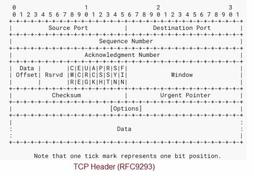Ethernet vs. Fast Ethernet vs. Gigabit Ethernet: Key Differences
Advertisement
This article outlines the key differences between Ethernet, Fast Ethernet, and Gigabit Ethernet.
Ethernet Basics
This section provides fundamental information about Ethernet, covering topics such as:
- Ethernet over copper
- Ethernet Business
- Gigabit Ethernet
- 40Gbps Ethernet PHY
- 100Gbps Ethernet PHY
- 10Gbps Ethernet PHY
- Ethernet types
Ethernet (802.3)
Normal Ethernet operates at a speed of 10Mbps. The Ethernet MAC technology used is CSMA/CD (carrier-sense multiple access with collision detection).
The following table details different 10 Mbps Ethernet specifications:
| Specification | 10BASE5 | 10BASE2 | 10BASE-F | 10BASE-T |
|---|---|---|---|---|
| Maximum segment length | 500 m | 185 m | Varies from 400 m to 2000 m | 100m |
| Topology | Bus | Bus | Star | Star |
| Medium | 50-”omega” thick coax. | 50-”omega” thin coax. | Multimode fiber | 100-”omega” UTP |
| Connector | NICDB15 | BNC | ST | RJ-45 |
| Medium attachment | MAU bolted to coax ethernal or on NIC | External or on NIC | External or on NIC | External or on NIC |
| Stations/cable segment | 100 | 30 | N/A | 2 (NIC, repeater) |
| Maximum segments | 5 | 5 | 5 | 5 |
There are two types of Ethernet: half-duplex and full-duplex.
Ethernet MAC Parameters
- Slot time: 512 bit times
- Min. Interframe Gap: 96 bit times
- Attempt Limit: 16 (tries)
- Backoff limit: 10 (exponential number)
- JamSize: 32 bits
- Max. Frame Size: 1518 bytes
- Min. Frame Size: 64 bytes (512 bits)
- Address Size: 48 bits
Fast Ethernet (802.3u)
Fast Ethernet refers to Ethernet that operates at a speed of 100Mbps. IEEE standard 802.3u for Fast Ethernet/100BASE-T was specified in May 1995.
Features of Fast Ethernet
- Includes multiple PHY layers.
- Uses the original Ethernet MAC but operates at 10 times the speed.
- Requires a star-wired configuration with a central hub.
The MAC parameters remain the same as those described for Ethernet above.
Physical Layers for Fast Ethernet
- 100BASE-TX: Requires 2 pairs of Cat.5 UTP/Type1 STP cables.
- 100BASE-FX: Requires 2 strands of multimode fiber.
- 100BASE-T4: Requires 4 pairs of Cat.3 or better cables.
The following table summarizes the different versions of 100BASE-T physical layers:
| Specification | 100BASE-Tx | 100BASE-Fx | 100BASE-T4 |
|---|---|---|---|
| IEEE standard | 802.3u-1995 | 802.3u-1995 | 802.3u-1995 |
| Encoding | 4B/5B | 4B/5B | 8B/6T |
| Cabling | UTP cat.5 or STP | Multimode or single mode fiber | UTP cat.3/4/5 |
| Signal frequency | 125 MHz | 125 MHz | 25 MHz |
| No. of pairs needed | 2 | 2 | 4 |
| No. of transmit pairs | 1 | 1 | 3 |
| Distance | 100m | 150/412/2000 m | 100m |
| Full duplex capabilities | Yes | Yes | No |
Gigabit Ethernet (802.3z)
Gigabit Ethernet refers to Ethernet operating at a speed of 1000Mbps (1Gbps) or higher. Gigabit Ethernet uses the same 802.3 frame format as 10Mbps Ethernet and 100Mbps Fast Ethernet.
It also operates in half-duplex and full-duplex modes.
There are various Gigabit Ethernet versions that operate at 1 Gigabit, 10 Gigabit, 40 Gigabit, and 100 Gigabit per second speeds. There are also various versions for 10 Gbps Ethernet, such as 10GBASE-T, 10GBASE-R, 10GBASE-X, and 10GBASE-W.
The MAC parameters for Gigabit Ethernet are the same as those mentioned above for Ethernet, except for the slot time, which is 512 byte times.
Advertisement
 RF
RF







